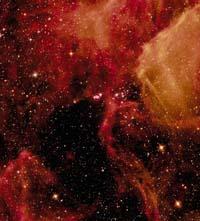Aluminium to estimate the number of supernovae

A radioactive isotope of aluminium has allowed to quantify the number of supernovae of the milky pathway. The research has been carried out at the Max Planck Institute in Garching (Germany).
Researchers have found that 26 aluminium atoms are formed in the supernovae, but when they are unstable isotopes they are immediately destroyed and release gamma rays in the process. In addition, they have seen that these gamma rays come from within the galaxy. In fact, in the interior of the Milky Way the speed of the spiral is greater, so the spectrum of light of gamma rays arrives displaced in a certain way.
Thus it has been concluded that the 26 aluminium isotope is more prosperous than was thought in our galaxy, even though it was insignificant compared to the typical 27 stable aluminium isotope. Then, with this information, they have estimated the number of supernovae in our galaxy. Since the result is consistent with the conclusions drawn in a non-direct manner in previous research, it has been positively assessed.
Buletina
Bidali zure helbide elektronikoa eta jaso asteroko buletina zure sarrera-ontzian











